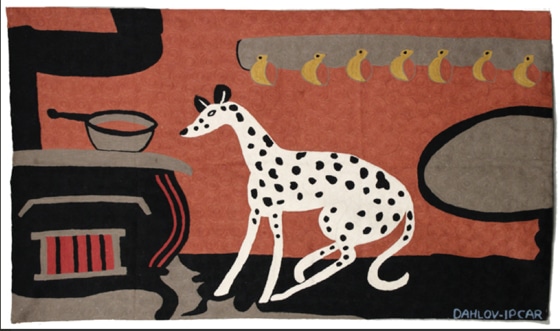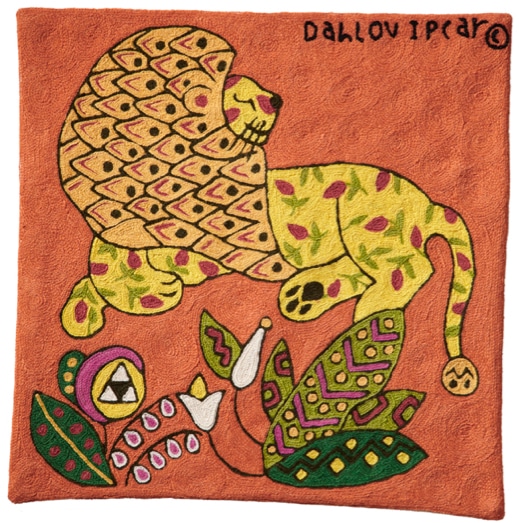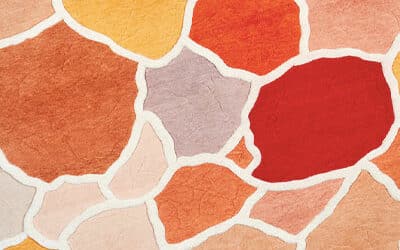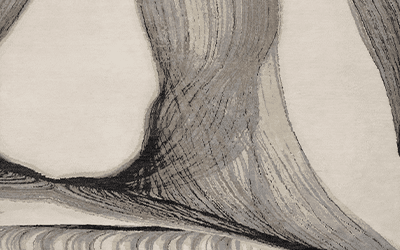Grayson Perry, Royal Academician, Turner Prize winner and fêted contemporary British artist? Meet Marguerite Zorach. Several years ago your scribe hit pay dirt in a charity shop. Ann Wiseman’s 1969 book Rag Tapestries and Wool Mosaics introduced your scribe to American modern artist Marguerite Zorach (1887-1968), and it was Zorach herself who introduced Wiseman to the art of hand-hooked rugs. Although Zorach is undeservedly little known in Europe, your scribe nevertheless suspects Perry’s tapestry series “The Vanity of Small Differences” owes a direct or indirect debt to Zorach. COVER has been granted exclusive permission by Zorach’s grandson to publish the following image.
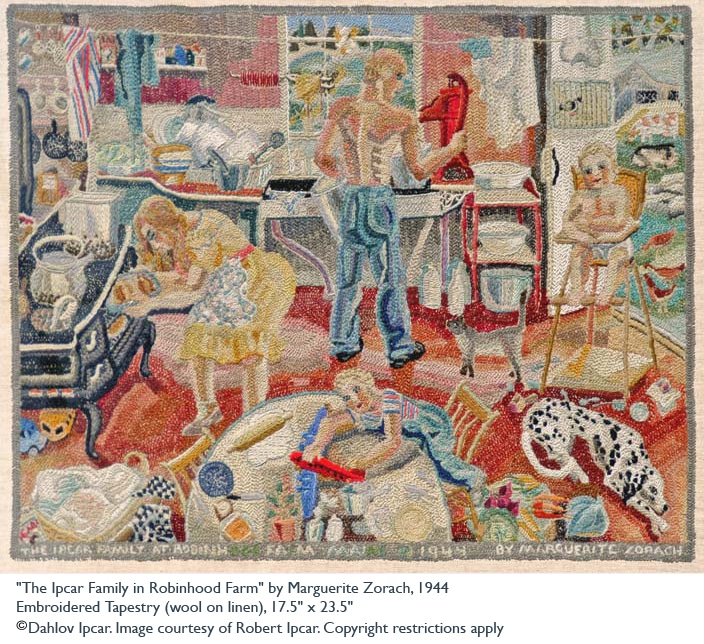
The Ipcar Family at Robinhood Farm, Maine” (1944) by Marguerite Zorach. Copyright Dahlov Ipcar. All rights reserved. Photograph courtesy Robert Ipcar (the young boy with the airplane). Click to view a larger image.
With a mastery of multiple media and diverse stylistic influences from the Fauves to folk art, it would underserve Zorach to classify her solely as “a textile artist”. Zorach’s prolific output includes domestic tapestry panoramas, but unlike Perry’s tapestries, Zorach created each with her own hands. Choosing as her subject what others might see as rote domestic mundanity, Zorach knew these vignettes were fleeting treasures, and she captured her genius loci in an intimate way that allows subsequent audiences to feel kinship with her view of “earthly paradise”. Her work also contradicts the claim “Tapestry is the art form of grand houses”. So revelatory is Zorach’s technique, delivery and subject matter, your scribe has no qualms placing her on a par with British artist Sir Stanley Spencer.
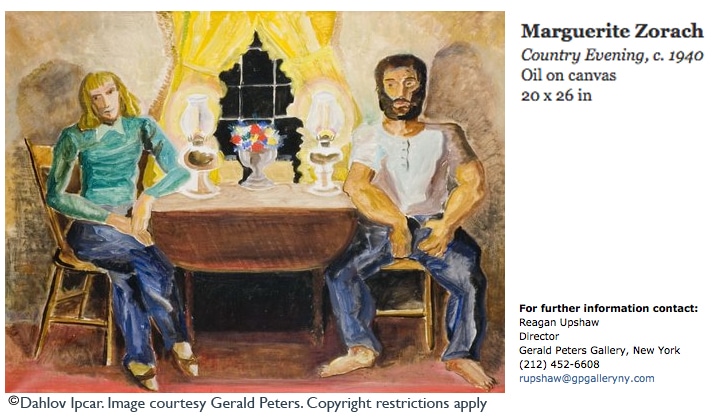
Country Evening by Marguerite Zorach, c. 1940. Oil on canvas. Copyright Dahlov Ipcar. All rights reserved. Photograph courtesy Gerald Peters Gallery, New York.
The Zorach story did not end with her death in 1968. Her daughter Dahlov Ipcar (born 1917) is a well-known American artist, illustrator and writer. For those like your scribe who lament they will never own a Zorach tapestry, there is good news. The Classic Rug Collection licensed a selection of Ipcar’s illustrations and translated them into limited edition hand-stitched pillows and rugs. Barbara Barran, Founder and President of Classic Rug Collection told your scribe, “I gave one of these rugs to Dahlov, who put it in her bedroom, then did an oil painting of the rug in her room. Chaming! The painting sold immediately.”
Your scribe is only willing to share the news of Classic Rug Collection’s Dahlov Ipcar limited edition because she has already bagsied her trove. For the rest of you? Get in there quick before Grayson Perry buys up the lot. You will be buying the best of American art. DJ
